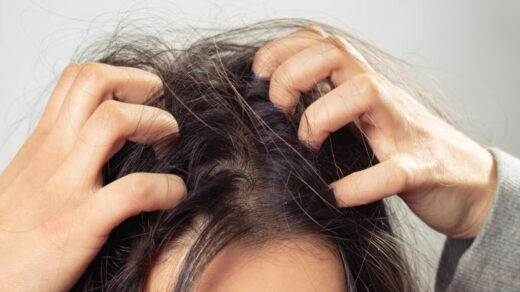Breaking the Chains of Self-Stigma: Strategies for Positive Self-Image
Certainly, you have heard of birthmarks. Newborn skin blemishes are evident either before or shortly after birth. These traces will remain forever. They’ll be there for you even as you get older. So, how are these marks linked to self-stigma? In the first instance, what exactly is self-stigma?
Stigma is described as a mark or stain of shame. If a scar is something you can see, then a stigma is something you can’t. Self-stigma is the reputation you place on yourself. No one else can see this stamp of shame except for you. One of the biggest problems in mental health is self-stigma, which has far-reaching consequences. More than half of those who suffer from mental health issues due to self-stigma never seek help. People with mental health issues often stigmatise themselves. Both your sense of self-worth and confidence is poor. You lack the motivation to pursue your aspirations because of this. But will it always be this difficult for you? No. In this piece, we’ll define self-stigma and explore some strategies for moving past it.
Examples of Stigma
The American Psychiatric Association reports that stigma against those who suffer from the mental disease remains pervasive in today’s society despite widespread efforts to combat the problem. Some of the things people with mental illness dread most are being rejected, feeling devalued, and being treated unfairly. We must put an end to the pervasive lack of confidence-boosting positivity in the community at large.
Self-stigma prevents people with mental illness from seeking professional psychiatric assistance, even though they desperately need it. People who are mentally ill have a lot of unanswered requirements. Distinct forms of discrimination exist. Here are some of them:
Prejudice
The term refers to a set of persistent, broad beliefs about a specific group of people. To stereotype is to incorrectly assume that all members of a given group share a common set of traits based on a sampling of their members. Assumptions like “all bikers are big and burly and wear leather and have lots of tattoos and drink beer all day long” are stereotypical.
People’s lives are made easier by stereotypes. Meeting new people no longer requires deep consideration. As a result, holding onto preconceived notions can breed bigotry.
Bias
Irrational and unfair judgements about people based on insufficient consideration or incorrect information are examples of prejudice. When people are prejudiced, others may respond negatively because of the stereotypes they reinforce. Discrimination is associated with groupthink. People who are different from what is considered “normal” in a given culture often face discrimination.
Pride and Prejudice by Jane Austen is a classic illustration of prejudice. With fewer facts at her disposal, the female protagonist developed a negative impression of the male protagonist. Elizabeth Bennet’s bias against Mr. Darcy affected the opinions of those around her. They believed the heroine’s negative assessment of the male lead. But in the end, things worked out for the best. In actual life, encounters with prejudice don’t always end happily.
Discrimination
It is generally agreed that discrimination is the most harmful form of reputation. Behavioural public shame occurs when an individual displays hostile and hostile behaviour towards a social group.
When comparing bias and discrimination, what are the key differences? According to the research of P.W. Corrigan, it is crucial to discern between discrimination and prejudice if one is to avoid both public and self-stigma.
According to Corrigan PW, a person is prejudiced if they think negatively of a certain group of individuals. Their words may sway others, but they can’t physically hurt anyone with them. On the other hand, discrimination would incite others to harm a protected class of individuals. The harmful impacts others have on people with mental illnesses are now clear to you after you learned about the public stigma of mental illness and the distinctions between stereotypes, prejudice, and discrimination.
Internalised Stigma of Mental Illness, Also Known as Self-stigma
Mentally ill people who are subjected to continuous negative stereotyping and culturally devaluing environments may develop self-stigma, self-devaluation, low self-esteem, and a poor self-concept. Many individuals with mental health issues accept that they will inevitably ‘end up’ like other people with their condition. Since people mend and cope in different ways, this is not accurate.
Because of the public stigma associated with mental disease, some patients may feel uncomfortable letting their friends and family know that they are receiving treatment. People with mental health issues often falsely believe that they are responsible for the devastation their condition has caused in their lives.
Discrimination, Confidence, and Capability
The Modified Labelling Theory is also relevant to discussions of self-stigma and mental illnesses. The National Alliance on Mental Illness (NAMI) proposes the Modified Labeling Theory of Mental Illness to explain how a person with a mental illness diagnosis may develop stigmatising attitudes towards themselves and others. The act of visiting a psychiatric facility is often seen as indicative of a more serious mental health issue. If you give someone a bad name, it will hurt their confidence and sense of value.
The “why try” effect, in addition to the labelling theory, provides a deeper grasp of stigma and identity. A person’s self-efficacy can be negatively impacted by the “why try the effect,” which has been linked to self-stigma. Individual belief in one’s ability to accomplish a goal constitutes self-efficacy.
It’s possible that someone with a severe mental disorder won’t try new things on their own because they don’t believe in their ability to succeed. As a result, one’s standard of living suffers. If you’ve internalised the prejudice against people with mental illness, you might shy away from opportunities where you might feel less than perfect. You don’t want to be mocked in front of other people. To prevent interacting with other people.
Discrimination in Mental Health Treatment Facilities
There are currently three guiding concepts in mental health care. Reintegration, community involvement, and healing are the tenets upon which these practices rest. These three are working towards the same end. A person’s ability to succeed is harmed by the weight of stigma. Self-improvement plans for one’s own mental and emotional well-being are central to mental health services. The objectives are tailored to the individual’s passions, regardless of their cognitive and physical capacities. Education, employment, health, relationships, and faith are just a few examples of possible areas of interest.
Controlling Internal Distaste
Many people with the mental disease do not share the stigma view. While others may query and push back against the prejudice, some may choose to simply accept it and let it have an unhealthy effect on their lives. Those who buy into the stereotype are setting themselves up for a lifetime of low self-worth and struggle.
Those who fight the stereotype will be passionate, outspoken, and furious. The quality of life of those with severe mental disease can be enhanced through empowerment. Benefits include increased confidence, independence, and societal bonds. Those with mental illness who push themselves to achieve their objectives have a better chance of succeeding in life. They feel better overall and have higher expectations for the outcome of their therapy.
The Primary Objective Is Self-Development
The negative connotation will remain. Having a psychiatric disorder won’t change that fact. Gaining control of your own life will increase your odds of healing and success in the future. Finding the right doctor or hospital for your therapy is crucial. Understanding both official and informal care options is important when assessing where to turn for assistance. Professionals like psychiatrists, counsellors, and therapists provide the bulk of formal assistance for those who seek it.
Care From Loved Ones and Acquaintances is Considered Informal Assistance
Because of the fear of being judged negatively by their peers, people with mental disorders often avoid seeking professional help. They also report feeling less stigmatised by receiving care from peers, family, and others outside the medical profession.
Many People Feel Compelled to Reach Out for Assistance
The risk of gossip and further stereotyping, however, makes some people view casual care as beneath them. Women, the elderly, the well-educated, and those whose partners have left them are more likely to seek out professional help. Informal care is preferred by men, those under 30, those with lower levels of education, and married or cohabiting pairs.
Self-Determination Despite Mental Illness Stigma
People of all ages, ethnicities, financial backgrounds, and religious persuasions experience self-stigma to varying degrees. Self-stigma lowers self-worth, treatment motivation, and living satisfaction. It also raises the odds of experiencing extreme symptoms and having suicidal ideas.
Learn as much as you can about mental illness if you share a home with someone who has it. They’re just people, like you and me, going through a tough period. You can have more sympathy for them if you know what they’re going through. Vouch for confidence and reject guilt.
They should be given the chance to recover without having to endure such shame. Don’t give up hope if you’re dealing with a mental disease. Do not allow other individuals to hinder your road to wellness. Although coming out and disclosing your illness may expose you to discrimination, it is well worth it. Once a patient recognises the severity of their illness, treatment can begin. When you prioritise your health over the opinions of others, recovery can begin.
Put the Stigma to the Test
Dispel the stereotypes. Keep your mental condition private. Don’t hide the fact that you’re getting help. Don’t give in to the pressure of the prejudice surrounding the mental disease. The only trip that matters is the one you take within yourself. You don’t have to feel ashamed or alone on your path.



